James Abbott McNeill Whistler (1834-1903)Stormy Sea signed with artist's device (lower left) watercolor and gouache on brown paper laid down on paperboard 6 7/8 x 10 in. (17.5 x 25.4 cm.) Painted circa 1885-90.FootnotesProvenance William Bell Paterson (1859-1952), London, by 1927. Private collection, Delaware. Private collection, Georgia, by descent from the above. By descent from the above to the present owner, 2015. Literature M.F. MacDonald, James McNeill Whistler Drawings, Pastels and Watercolors: A Catalogue Raisonné, New Haven, Connecticut, 1995, p. 393, no. 1048, illustrated. This work is included as entry M.1048 in the updated version of Dr. MacDonald's catalogue raisonné, accessible at www.whistlerpaintings.gla.ac.uk. "My whole scheme was only to bring about a certain harmony of colour". - James Abbott McNeill Whistler As a vocal leader of the Aesthetic movement and often combative defender of "Art for Art's sake", James Abbott McNeil Whistler's radical artwork and personality had a profound impact on American and European artists in the late nineteenth century, including John Singer Sargent and William Merritt Chase Influenced by a myriad of sources, from Ancient Greek sculptures to Japanese woodblock prints to the paintings of Velasquez and Rembrandt, Whistler's aim was to create portrait and landscape "arrangements" which are harmonious in tone, line, and form. Believing that he was composing his pictures, much in the same way as a musician composes musical scores, in 1872 Whistler began to title his new work and re-title many of his earlier works using terms associated with music, such as a "symphony", "harmony", "nocturne" or "arrangement". As Ronald Anderson wrote, "By naming and renaming all his paintings with musical titles, James sought to remove the subject from the setting or narrative. . . Such a method of naming contributed to James's aim to focus on the painting itself and to encourage an abstraction of the work from its more material origins." (R. Anderson and A. Koval, James McNeill Whistler Beyond the Myth, London, 1994, p. 186.) Following his trip to Chile in 1866, Whistler began painting night scenes with a black, blue, and green palettes, which he would later title "Nocturnes." These evening, marine landscapes are among his most innovative and well-known works, as well as controversial. In 1877, Whistler exhibited "Nocturne in Black and Gold – The Falling Rocket" at the Grosvenor Gallery in London, which led to leading art critic John Ruskin to accuse Whistler of "flinging a pot of paint in the public's face." After this public rebuke, Whistler sued Ruskin for libel. This court case was very financially costly to the artist and while he won the case, he was only awarded one farthing and had to declare bankruptcy after paying all the court fees. When painting these maritime nocturnes, Whistler frequently used highly thinned paint that was loosely applied and flicked onto the page to suggest shorelines, ships, and lights, as we can see in the present work. As Dr. Margaret MacDonald notes following firsthand examination, "It was painted boldly and freely, except for some details along the horizon, including a couple of boats and possibly buildings and a jetty. The brushstrokes on sea and sky are unusually broad, and mostly applied with full brushloads of paint, which sank quickly into the slightly rough brown paper. Areas were left bare, particularly to suggest the breaking waves. It is likely that the artist was working fast under difficult conditions (there are a number of tiny spots on the surface that might be due to salt spray)." Based on the technique, paper, and butterfly signature, Dr. MacDonald has theorized that this work was likely created circa 1899/1900 in Pourville or Dieppe in France or along the Dutch coast. This presumed missing watercolor was known only in the catalogue raisonne by a black and white photograph in the holdings of the Witt Library at The Courtauld Institute in Londo
James Abbott McNeill Whistler (1834-1903)Stormy Sea signed with artist's device (lower left) watercolor and gouache on brown paper laid down on paperboard 6 7/8 x 10 in. (17.5 x 25.4 cm.) Painted circa 1885-90.FootnotesProvenance William Bell Paterson (1859-1952), London, by 1927. Private collection, Delaware. Private collection, Georgia, by descent from the above. By descent from the above to the present owner, 2015. Literature M.F. MacDonald, James McNeill Whistler Drawings, Pastels and Watercolors: A Catalogue Raisonné, New Haven, Connecticut, 1995, p. 393, no. 1048, illustrated. This work is included as entry M.1048 in the updated version of Dr. MacDonald's catalogue raisonné, accessible at www.whistlerpaintings.gla.ac.uk. "My whole scheme was only to bring about a certain harmony of colour". - James Abbott McNeill Whistler As a vocal leader of the Aesthetic movement and often combative defender of "Art for Art's sake", James Abbott McNeil Whistler's radical artwork and personality had a profound impact on American and European artists in the late nineteenth century, including John Singer Sargent and William Merritt Chase Influenced by a myriad of sources, from Ancient Greek sculptures to Japanese woodblock prints to the paintings of Velasquez and Rembrandt, Whistler's aim was to create portrait and landscape "arrangements" which are harmonious in tone, line, and form. Believing that he was composing his pictures, much in the same way as a musician composes musical scores, in 1872 Whistler began to title his new work and re-title many of his earlier works using terms associated with music, such as a "symphony", "harmony", "nocturne" or "arrangement". As Ronald Anderson wrote, "By naming and renaming all his paintings with musical titles, James sought to remove the subject from the setting or narrative. . . Such a method of naming contributed to James's aim to focus on the painting itself and to encourage an abstraction of the work from its more material origins." (R. Anderson and A. Koval, James McNeill Whistler Beyond the Myth, London, 1994, p. 186.) Following his trip to Chile in 1866, Whistler began painting night scenes with a black, blue, and green palettes, which he would later title "Nocturnes." These evening, marine landscapes are among his most innovative and well-known works, as well as controversial. In 1877, Whistler exhibited "Nocturne in Black and Gold – The Falling Rocket" at the Grosvenor Gallery in London, which led to leading art critic John Ruskin to accuse Whistler of "flinging a pot of paint in the public's face." After this public rebuke, Whistler sued Ruskin for libel. This court case was very financially costly to the artist and while he won the case, he was only awarded one farthing and had to declare bankruptcy after paying all the court fees. When painting these maritime nocturnes, Whistler frequently used highly thinned paint that was loosely applied and flicked onto the page to suggest shorelines, ships, and lights, as we can see in the present work. As Dr. Margaret MacDonald notes following firsthand examination, "It was painted boldly and freely, except for some details along the horizon, including a couple of boats and possibly buildings and a jetty. The brushstrokes on sea and sky are unusually broad, and mostly applied with full brushloads of paint, which sank quickly into the slightly rough brown paper. Areas were left bare, particularly to suggest the breaking waves. It is likely that the artist was working fast under difficult conditions (there are a number of tiny spots on the surface that might be due to salt spray)." Based on the technique, paper, and butterfly signature, Dr. MacDonald has theorized that this work was likely created circa 1899/1900 in Pourville or Dieppe in France or along the Dutch coast. This presumed missing watercolor was known only in the catalogue raisonne by a black and white photograph in the holdings of the Witt Library at The Courtauld Institute in Londo


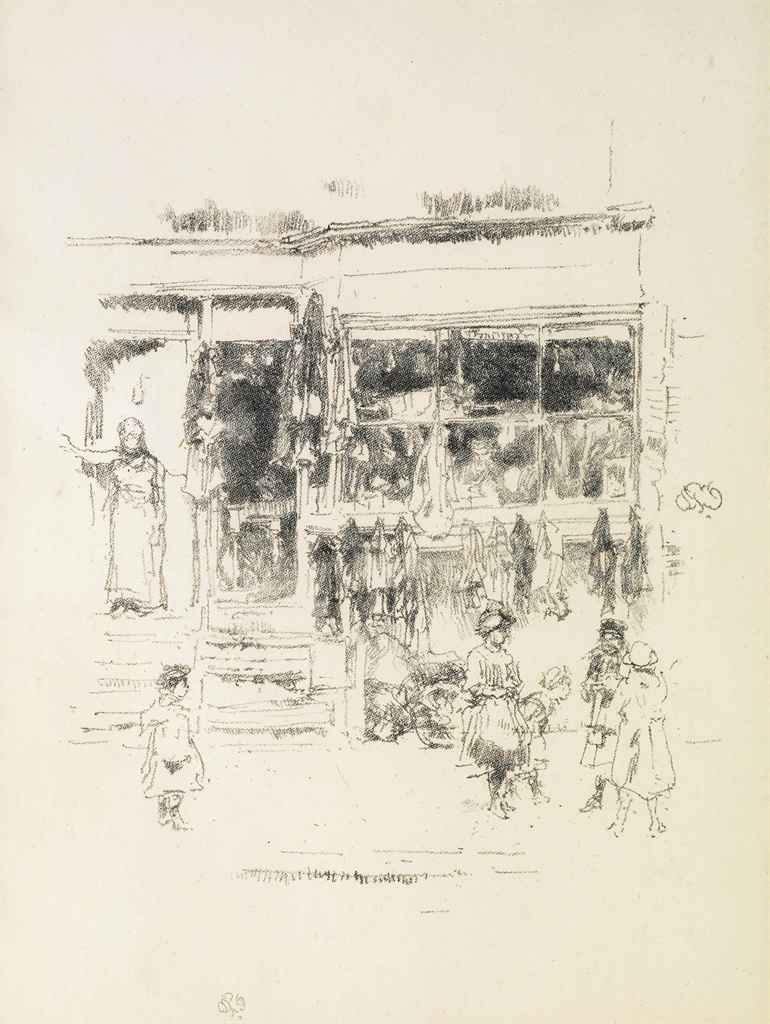
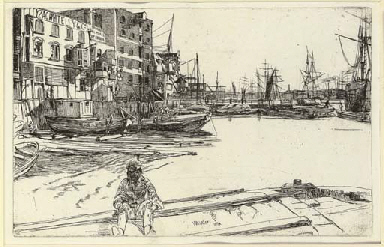
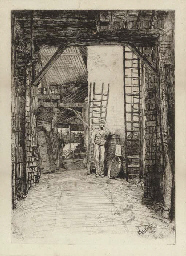






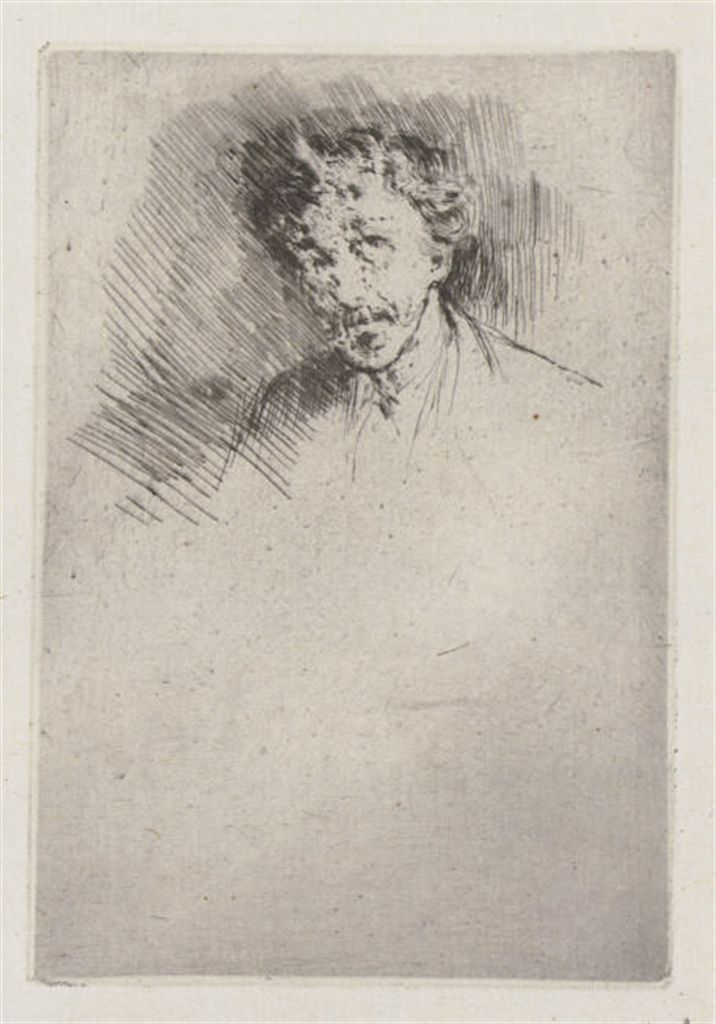


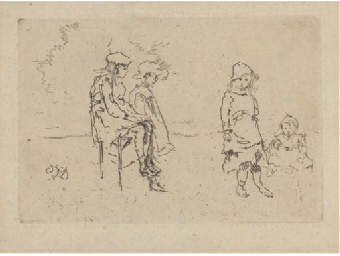
Try LotSearch and its premium features for 7 days - without any costs!
Be notified automatically about new items in upcoming auctions.
Create an alert